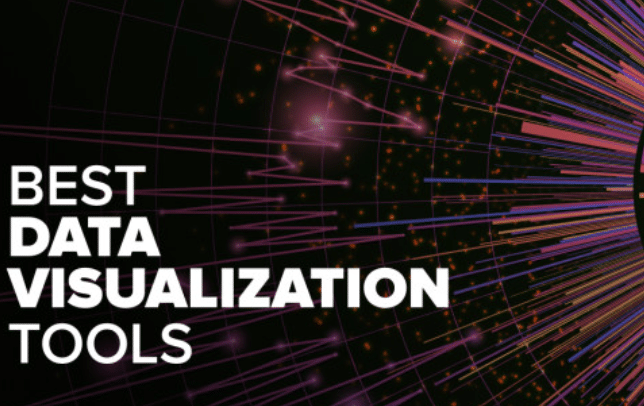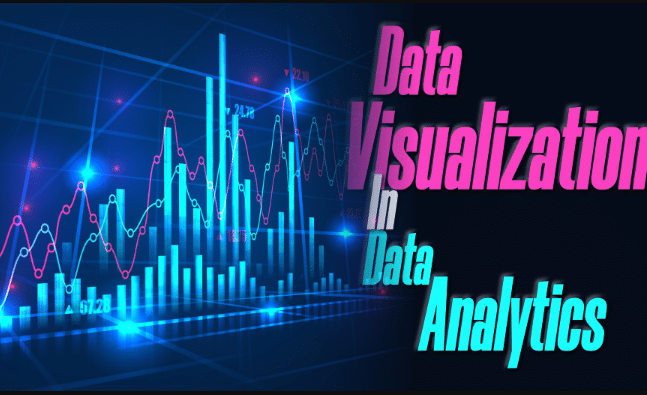edu.kpp621.id – Data is the lifeblood of modern businesses. It holds valuable insights that can drive strategic decision-making, improve operational efficiency, and unlock untapped opportunities. However, raw data alone is often difficult to comprehend and analyze. That’s where Best Data Visualization Tools come into play. These powerful tools allow us to transform complex datasets into intuitive visual representations, enabling us to gain deep insights at a glance.
In this article, we will dive into the world of data visualization tools, exploring the best options available and uncovering their unique features. Whether you’re a data analyst, a business executive, or an aspiring data scientist, this guide will equip you with the knowledge to make informed decisions and harness the true potential of your data. So, let’s embark on this visual journey together.
Best Data Visualization Tools: Enhancing Data Understanding

1. Tableau: Unleashing the Artist Within
Tableau is a leading data visualization tool that empowers users to create stunning visualizations with ease. With its intuitive drag-and-drop interface, even those without extensive technical expertise can transform raw data into compelling visual stories. From interactive dashboards to interactive maps, Tableau offers a diverse range of visualization options to cater to various data needs. It supports seamless integration with various data sources, making it a versatile tool for data exploration.
2. Power BI: Empowering Insights with Microsoft’s Finest
Microsoft Power BI is another popular choice for data visualization, particularly for organizations deeply embedded in the Microsoft ecosystem. This tool seamlessly integrates with other Microsoft products, such as Excel and Azure, allowing users to leverage their existing infrastructure. Power BI offers a wide range of visualization options and interactive features, including natural language queries and AI-powered insights. Its strong collaboration capabilities make it an ideal choice for teams working together on data-driven projects.
3. D3.js: Unleashing the Creative Power of Web Technologies
For those seeking complete customization and flexibility, D3.js (Data-Driven Documents) is a JavaScript library that enables the creation of dynamic and interactive visualizations. By harnessing the power of HTML, CSS, and SVG, D3.js allows developers to build unique visualizations tailored to their specific needs. While it requires more technical expertise compared to other tools, D3.js provides unparalleled control over the visual elements, making it a go-to choice for developers and designers looking to push the boundaries of data visualization.
4. QlikView: Simplifying Complex Data Relationships
QlikView is a powerful data visualization tool that focuses on simplifying the exploration of complex data relationships. It uses an associative data model, allowing users to dynamically interact with data and explore multiple dimensions simultaneously. QlikView’s unique feature, called “Qlik Sense,” enables users to search for patterns, create personalized dashboards, and share insights collaboratively. With its powerful associative engine, QlikView empowers users to uncover hidden connections and gain a deeper understanding of their data.
5. Google Data Studio: The Power of Collaboration and Accessibility
As part of Google’s suite of productivity tools, Google Data Studio offers a user-friendly and collaborative environment for data visualization. It allows users to create interactive dashboards and reports that can be easily shared and accessed by teams. Google Data Studio integrates seamlessly with other Google services, such as Google Analytics and Google Sheets, enabling users to visualize data from various sources. With its intuitive interface and real-time collaboration features, Google Data Studio is an excellent choice for teams seeking a streamlinedworkflow and easy sharing of visual insights.
6. Plotly: Interactive Visualizations Made Easy
Plotly is a versatile data visualization tool that provides a wide range of graphing libraries for multiple programming languages, including Python, R, and JavaScript. With its interactive and responsive charts, Plotly allows users to explore data from different angles and drill down into specific details. Its extensive collection of visualization options, including scatter plots, bar charts, and heatmaps, makes it suitable for various industries and use cases. Plotly also offers a cloud-based platform for easy collaboration and sharing of visualizations.
7. Domo: Unlocking Actionable Insights in Real Time
Domo is a cloud-based platform that combines data visualization with business intelligence capabilities. It provides a unified view of data from multiple sources, enabling users to gain real-time insights and make data-driven decisions. Domo offers a wide array of pre-built visualizations and dashboards, making it easier for users to get started quickly. Its powerful collaboration features allow teams to share insights, annotate visualizations, and work together seamlessly.
8. Highcharts: Crafting Engaging Visual Experiences
Highcharts is a JavaScript charting library that offers a wide range of visually appealing and interactive charts. From line graphs to pie charts, Highcharts provides developers with an extensive set of options to bring their data to life. It supports real-time updates and dynamic resizing, making it suitable for applications that require live data visualizations. Highcharts is highly customizable, allowing developers to tweak every aspect of the visualizations to match their design requirements.
9. IBM Cognos Analytics: Unifying Data Visualization and Business Intelligence
IBM Cognos Analytics is a comprehensive platform that combines data visualization with advanced analytics and reporting capabilities. It provides a unified environment for exploring, modeling, and visualizing data, empowering users to uncover hidden insights and make data-driven decisions. IBM Cognos Analytics offers a wide range of visualization options, including interactive dashboards, infographics, and storytelling features. Its AI-powered assistant, Watson Analytics, further enhances the data exploration experience by providing automated insights and recommendations.
10. Looker: Empowering Data Exploration with a Modern Approach
Looker is a modern data platform that emphasizes collaboration, data governance, and self-service analytics. It offers an intuitive interface for exploring data and creating interactive dashboards. Looker’s unique modeling layer allows users to define metrics and dimensions on the fly, enabling dynamic exploration of data without the need for extensive coding. With its strong focus on data governance, Looker ensures that users have access to reliable and up-to-date information while maintaining security and compliance.
Frequently Asked Questions (FAQs)

FAQ 1: What are the key benefits of using data visualization tools?
Data visualization tools offer several key benefits, including:
- Improved Data Understanding: Visual representations make complex data easier to comprehend and interpret, enabling users to gain actionable insights.
- Enhanced Decision-Making: Visualizations facilitate quick decision-making by presenting information in a clear and intuitive manner.
- Identifying Patterns and Trends: Visualizations help identify patterns, trends, and correlations that may be difficult to spot in raw data.
- Effective Communication: Visualizations simplify the communication of data insights, making it easier to convey complex information to stakeholders.
- Exploration of Multiple Dimensions: Interactive visualizations allow users to explore data from different angles and dimensions, facilitating deeper analysis.
FAQ 2: Which data visualization tool is best for beginners?
For beginners, Tableau and Power BI are excellent choices. These tools offer user-friendly interfaces, drag-and-drop functionality, and a wide range of pre-built templates and visualizations. They also provide extensive documentation, tutorials, and a supportive user community to help beginners get started quickly.
FAQ 3: Can I customize the visualizations in these tools to match my brand’s aesthetic?
Yes, most data visualization tools offer customization options to match your brand’s aesthetic. You can customize colors, fonts, chart styles, and even add your company logo. This allows you to create visualizations that align with your brand’s identity and maintain a consistent visual representation across your reports and dashboards.
FAQ 4: Are these data visualization tools compatible with different data sources?
Yes, the majority of data visualization tools support integration with various data sources. They can connect to databases, spreadsheets, cloud storage services, and even real-time data streams. This flexibility allows you to pull data from multiple sources into a unified visualization environment, providing a comprehensive view of your data.
FAQ 5: Are these data visualization tools suitable for large-scale enterprise deployments?
Yes, many of these data visualization tools are designed to cater to the needs of large-scale enterprise deployments. They offer features such as data governance, role-based access control, and scalability to handle large volumes of data and users. Additionally, they provide integration capabilities with other enterprise systems, ensuring seamless data flow and compatibility with existing infrastructure.
FAQ 6: Can I collaborate with my team members using these data visualization tools?
Yes, collaboration is a key aspect of most data visualization tools. They offer features for sharing visualizations, collaborating on projects, and providing feedback within the tool itself. Some tools even allow real-time collaboration, where multiple users can work on the same visualization simultaneously. These collaboration features enhance teamwork and facilitate knowledge sharing within your organization.
Conclusion: Unleash the Power of Visual Insights
In today’s data-driven world, the ability to extract meaningful insights from data is paramount. Best data visualization tools empower individuals and organizations to explore, analyze, and communicate data in a visually compelling manner. From Tableau and Power BI’s user-friendly interfaces to D3.js’s customization capabilities, there is a data visualization tool to suit every need and skill level.
By leveraging these tools, you can transform raw data into captivating visual stories, uncover hidden patterns and trends, and make data-driven decisions with confidence. So, embrace the power of data visualization and unlock the full potential of your data.